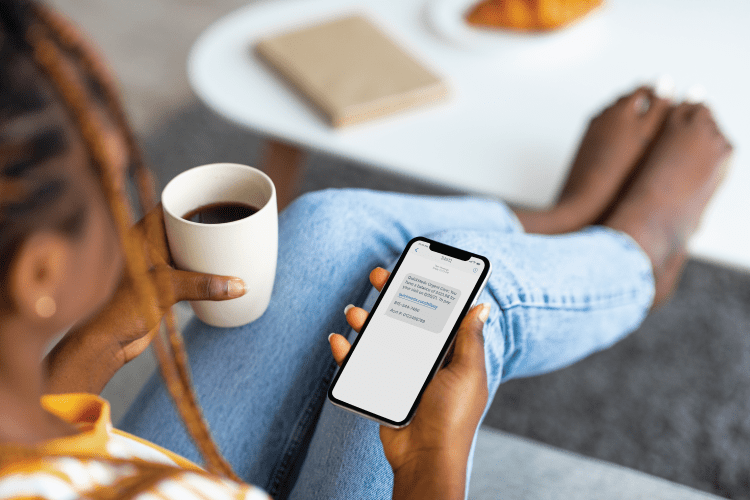
An experience that makes patients want to come back for a second (or third) visit is not about one single thing. Patients are very unhappy with healthcare as a whole — lucky for you, urgent care has a bit of an advantage removing healthcare complexities and providing same-day service and positive health outcomes beginning with the click of a mouse. How can urgent care leverage this advantage and transform the patient experience so that patients want to keep coming back?
This guide examines the pain points in the patient journey and the newest tech that solves each — and benefits the clinic equally as well as the patients.
Chapter One
Before we can address solutions for patient retention, we need to look at what patients find most challenging about healthcare. Patient satisfaction is low nationally, something that this Time article attributes to patient burnout.
“Going to the doctor may never be a fun experience, but surely it can be better than it is right now. In 2019, even before the COVID-19 pandemic rocked the foundations of healthcare, an Ipsos survey found that 43% of Americans were unsatisfied with their medical system, far more than the 22% of people in the U.K. and 26% of people in Canada who were unsatisfied with theirs. By 2022, three years into the pandemic, just 12% of U.S. adults said healthcare was handled ‘extremely’ or ‘very’ well in the U.S., according to a poll from the Associated Press–NORC Center for Public Affairs Research.”
While these statistics are related to primary care, they provide insight as to what urgent care can do to offer a more positive patient experience, thereby improving retention and sustainability as a practice.
Time cited common reasons for patient dissatisfaction as “rude or inattentive providers, long wait times, and difficulty finding a convenient appointment.” Insurance is a major factor, too — people pay high premiums only to struggle to get an appointment, and then feel like they don’t receive the proper care or attention when they are finally seen. It’s no wonder patients are feeling burned out.
And provider burnout — which we’ve been addressing for some time — is part of the problem. As the Time article reports:
“Physician burnout only adds to patient burnout, says Dr. Bengt Arnetz, a professor at the Michigan State University College of Human Medicine who researches how to improve primary care. ‘Providers feel stressed, burned out, less empathetic. A lot of times they don’t engage the patient, and the patient wants to be engaged.’”
Patient engagement (PE) is obviously a critical piece of the solution here, but so is the operational health of a clinic. Arnetz and colleagues published a study analyzing the effects of minor tweaks to the operations of a small clinic. “After two weeks, the clinic scored higher than a comparison clinic on measures of efficiency, contributing to better patient and provider satisfaction.”
The opportunity to improve the patient experience comes at the right time for urgent care, as not only did the pandemic increase exposure to on-demand healthcare, but also, patient burnout is leading to fewer adults having primary care providers, and more patients choosing convenience-based care.
Chapter Two
The problems patients are experiencing are not shocking to anyone in healthcare. We’ve known that issues like convenience, wait time, and communication are hurting the patient experience – and that more logistical challenges like geographical access and affordability exacerbate the general struggle to receive quality care.
Urgent care can’t solve all these problems, but it is poised to address many of these challenges exceptionally well. Rather than address each pain point as a standalone issue, you’ll be more effective as a problem-solver if you consider the patient experience as a whole. Here are some of the struggles and considerations within the patient journey.
Finding and choosing you – Most new patients are going to find you online, and since they need urgent care, they need to get as much relevant info as quickly as they can from your website. Struggling to find location, hours, wait time, services offered, etc. creates a bad experience. If they have to dial a number to get information, that’s another pain point.
Waiting to be seen – While urgent care is faster than the emergency department, we know the wait can get pretty long. But it’s also supposed to be more convenient for patients, and it doesn’t feel that way when there is no visibility into wait time, changes to wait time, place in line, etc. — especially if a clinic is walk-in only.
Registration – For patients, filling out paperwork in the waiting room can feel like a cumbersome barrier to seeing a provider more quickly. For staff, manually completing data entry from those forms does increase wait time.
Patient care – After finally getting through registration, the wait, and vitals, time with the provider is sacred, and the patient wants to feel that. It sometimes doesn’t take much for a provider to come across as uncaring, rushed, disinterested, or distracted. None of those things are okay to someone who is dealing with a health concern. This doesn’t just make the patient feel like they aren’t receiving the care they deserve, it also might prevent them from asking questions. A person who is already feeling crummy just spent half their day waiting to be seen only to not be taken seriously AND they’re leaving confused about their health and/or your treatment plan. It would take a LOT of work to get that patient to come back in.
Total time in clinic – More specifically, total time alone in clinic, especially compared to how much time is being spent with a practitioner. No one wants to give up half a day just to be seen for five minutes. And even if you provide real-time wait time transparency to get into a treatment room, there is no visibility into how long it will take for the provider to come in or come back in once you’re there. Time moves very slowly for patients who are sitting in a treatment room waiting for the next person to come in.
Follow-up – Patients might forget post-care instructions, have questions after they leave the clinic, need to come back in, or want to share feedback. If there is no text or email connecting them back to you, they may not take the extra step of reaching out to you themselves — which can severely and poorly impact their own health. Additionally, if you care about your online review, know that dissatisfied patients are almost exclusively the ones who write an unprompted review.
Billing – Healthcare still relies heavily on paper bills and statements while the rest of the world has transitioned to more of a click-and-pay process, either from an email, text, app, or something else that is accessible via mobile device. Insurance and medical bills are already among the most painful to deal with; paper statements make this less simple and more distasteful.
To look at how to win the patient over at each of these steps, we’ll divide them into pre-visit, in-visit, and post-visit sections.
Chapter Three
The pre-visit is important to the patient experience because, just like any other first impression, it sets the tone for the rest of the visit. It’s easy for things to go south or even for patients to perceive the whole experience as bad if you start off on the wrong foot.
Let’s look at some of the ways technology helps you deliver a stellar experience in this tone-setting part of the patient journey.
Some of the best urgent care websites have an estimated wait time displayed very clearly either on the urgent care landing page or on a dedicated patient queue page where the patient can select a visit time (which updates in real time based on volume.)
Both of these features (visibility into wait time, saving a spot in line) drastically reduce the patient’s perception of wait time. They also allow the patient to continue about their lives until their appointment instead of being stuck in a parking lot or waiting area for hours on end — as a result, the visit seems more convenient, and the patient feels more in control of their time.
Some patient engagement solutions have enhanced these types of features even further, like:
These types of features can feel new and sexy to a clinic, but ultimately, they meet — not exceed —patient expectations. Urgent care is much different from other on-demand services like Uber or Instacart, but people still expect you to deliver a similar experience.
When we talk about innovation and the patient experience, healthcare will probably never pioneer anything. It uses models from other apps and services, and try to keep up. That’s why it’s important to choose a tech partner who is dedicated not only to the patient experience, but the urgent care patient experience.
Some of the most successful urgent cares we’ve partnered with use electronic pre-registration even for walk-in clients. This reduces time, as patients can complete the bulk of registration, including uploading insurance and ID cards, well ahead of the appointment. When patients select an estimated time of visit, they are prompted to check in and complete an easy process — which can also be used in-clinic for walk-ins.
These queuing and pre-registration features don’t only give patients a better, faster experience, also benefit the clinic by improving accuracy with data entry, providing visibility into volume so staff can adjust accordingly, and helping reduce door-to-door time.
“We have patients who come in who are on the elderly side where they don’t know technology, and it’s simple for them once they see how easy it is — we can walk them through it, then they’ll pick it up and say ‘oh this is easy!’”
Cynthia Byers, MA, Insight Urgent Care
Chapter Four
The patient’s experience with the providers and Non-Physician Practitioners (NPPs) may seem less in your control, but there are ways you can help give staff the best opportunity to deliver quality care. This Healthcare Innovation article sites numerous reasons that an AHIMA Foundation study reported that 76 percent of Americans don’t leave the doctor’s office on a positive note — and many have to do with communication. Here are just a few takeaways:

Twenty-two percent report they do not feel comfortable asking their physician certain health questions
Sixty-two percent of Americans report they are not “extremely confident” in their understanding of the health information they discuss with their physician
Chapter Five
A few things happen post-visit that not only affect the patient experience, but also your ongoing reputation. If you want to retain patients, it’s important to know where you may need to improve, and the opportunity to win back an unhappy patient is gold.

Chapter Six
If your EMR/PM and/or PE solution does not have the functionality to help you win over patients to get them back in, it may be time for a change. Experity has recently released numerous enhancements in our tools that help you deliver the positive experience patients expect, improve your business as a whole, and increase morale through simplified processes.
Convenient online registration and intake processes mean patients spend less time in your clinic, while optical character recognition increases the accuracy of information on file, resulting in quicker reimbursements and reduced manual data entry effort and errors.
Detailed benchmarks on wait times, satisfaction scores, online reservations vs. walk-ins, and ROI, help you make informed staffing decisions and refine processes.
Patients can save their spot online, see wait times across multiple sites, and receive real-time notifications and text alerts. You set patient expectations accurately, so they always feel in control of their time.
Text-based post-visit surveys help your staff identify and mitigate negative patient experiences quickly, keep a pulse on net promoter score (NPS), and encourage happy patients to share positive feedback online.
Proactively reach out to previous patients with automated, configurable texts based on diagnosis. With a link to conveniently schedule a follow up visit if they are not yet feeling better or due for annual services, patients are more likely to return to your clinic.